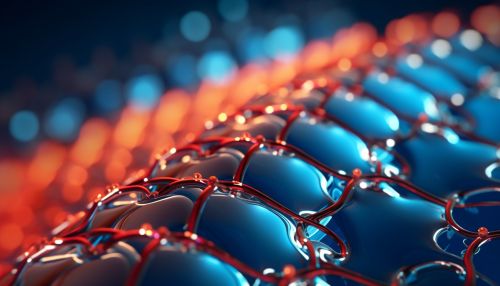Ion channel
Introduction
Ion channels are a class of proteins that are part of the cell's complex machinery. They are integral membrane proteins that allow ions to pass through the channel pore. Their functions are crucial in a variety of biological processes, including the establishment and control of a resting membrane potential, shaping action potentials and other electrical signals by gating the flow of ions across the cell membrane, controlling the flow of ions across secretory and epithelial cells, and regulating cell volume more on cell volume.
Structure
Ion channels may be composed of several subunits, each of which has a pore-forming region. The channels may also be multimeric, composed of several identical or non-identical subunits, each of which has a pore-forming region. The pore, located at the center of the complex, can be opened or closed by changes in the concentration of certain ions or by changes in the electrical charge across the cell membrane. The size of the ion channel pore determines the ion selectivity.


Function
Ion channels have two main functions: to maintain the resting membrane potential, and to create a transmembrane ion flow in response to changes in the cell environment. The ion channels do this by opening and closing in response to stimuli, allowing or blocking the flow of specific ions through the cell membrane. This ion flow creates an electrical current that can change the voltage across the membrane and signal to the cell to perform certain functions.
Types of Ion Channels
There are several types of ion channels, each with its own specific properties and functions. These include voltage-gated ion channels, ligand-gated ion channels, and mechanically-gated ion channels.
Voltage-Gated Ion Channels
Voltage-gated ion channels open and close in response to changes in the electrical potential across the cell membrane. These channels are critical in the generation of action potentials in neurons and muscle cells.
Ligand-Gated Ion Channels
Ligand-gated ion channels, also known as ionotropic receptors, open in response to specific ligand molecules binding to the receptor protein. The binding of the ligand changes the protein's shape and opens the channel, which allows specific ions to flow across the cell membrane.
Mechanically-Gated Ion Channels
Mechanically-gated ion channels open in response to physical deformation of the receptor, such as stretching or pressure. These channels are found in sensory neurons and help to translate mechanical stimuli into electrical signals.
Ion Channel Disorders
Abnormalities in ion channel function can lead to a variety of diseases, known as channelopathies. These can include conditions such as cystic fibrosis, epilepsy, and certain types of cardiac arrhythmias. Understanding the precise mechanisms of ion channel function and dysfunction can lead to the development of new therapeutic strategies for these conditions more on channelopathies.
